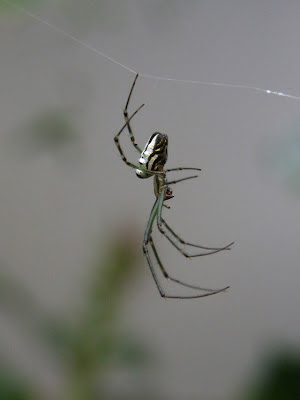 |
| Forgive my lack of food styling skills, but here is the cake, with the baked quinces (from yesterday's blog) on the side. Fortunately, the quinces were so very fragrant and delicious that all the cake's shortcomings were forgotten at first bite. So I just barely survived my rare foray into cake-baking by having something much better on the plate which served as a distraction. |
 |
| I particularly like the way Pammy can always find something in flower in the garden to dress a table. |
 |
| Overlooking all the fun was our little Backyard Supervisor, White Rabbit. She says: "Cake recipe, Jamie!" |
This is from Pam's vast folder full of recipes. I know she clipped it out of the Herald's 'Good Weekend' magazine, but it might be from 2012 or 2001, for all I know.
125g butter, softened
200g (1 cup) caster sugar
3 eggs
zest of 1/2 lemon
200g (1 1/2 cups) self-raising flour
200g (3/4 cup) natural yoghurt
Syrup
juice of 1/2 lemon
1/3 cup water
150g (3/4 cup) caster sugar
20cm cake tin
Preheat the oven to 180°C.
Cream the butter and caster sugar until pale and light. Beat in the eggs, one at a time.
Gently fold in the lemon zest and flour, then the yoghurt.
Use a spatula to scrape into a lined 20cm cake tin, making the centre a little lower than the edges,
Bake for 30-40 minutes or until a skewer inserted in the centre comes out clean.
To make the syrup, heat the water, sugar and lemon juice in a small saucepan and simmer for five minutes.
When the cake is cooked, leave it in the tin, poke a fine skewer all over the top (about 30 times should do it and spoon the hot lemon syrup over, trying to give the cake an even coverage of syrup.
Allow the cake to cool in the tin, before serving.






























